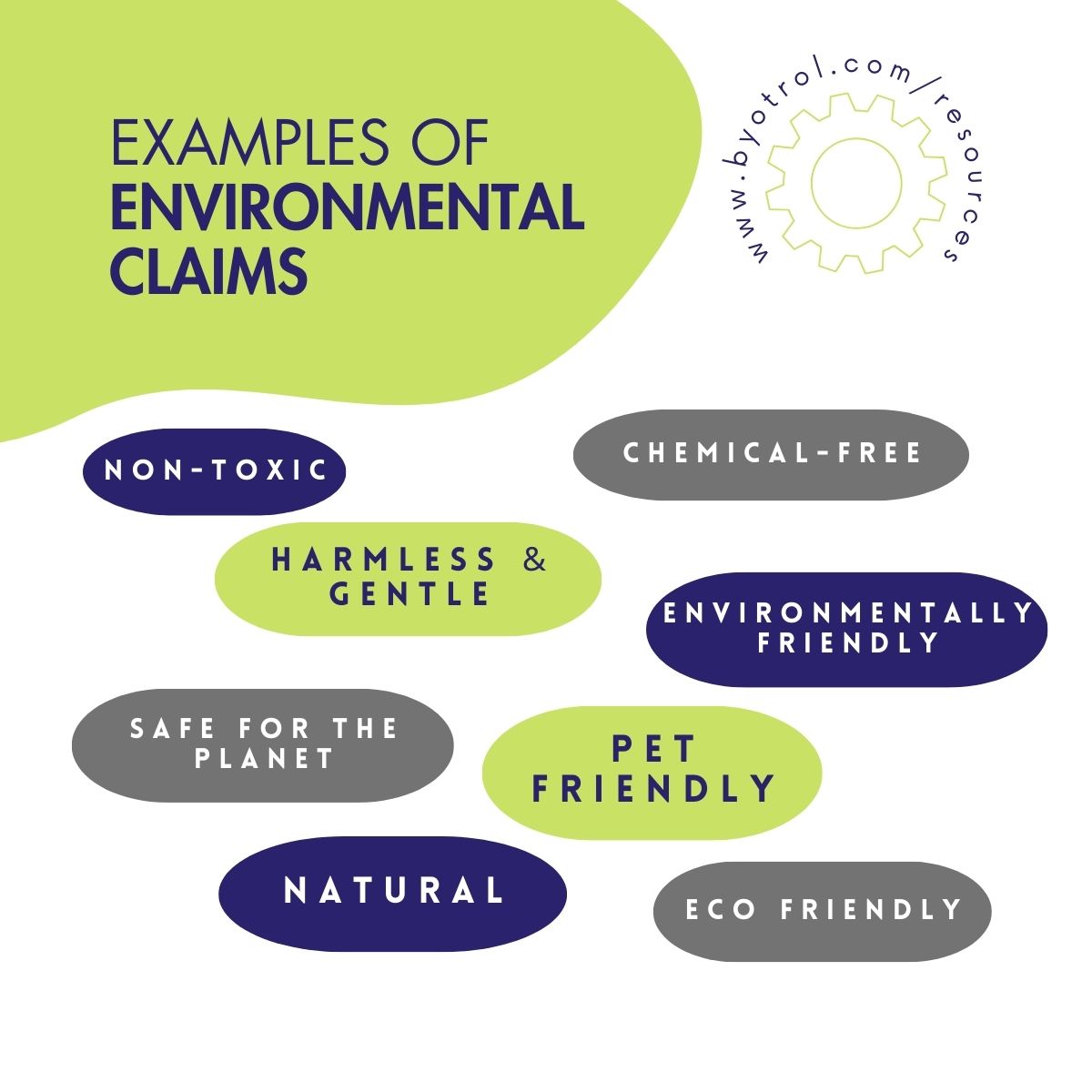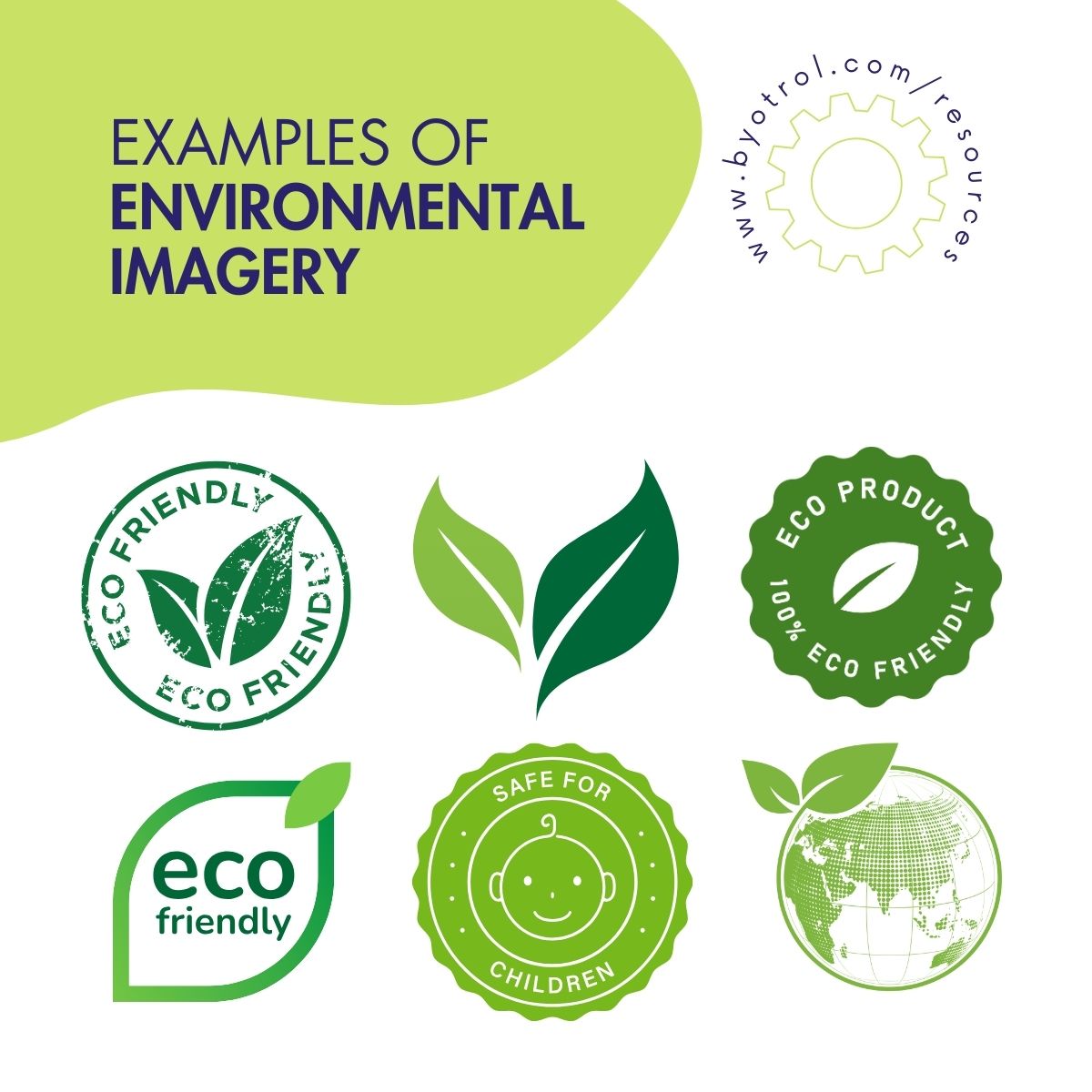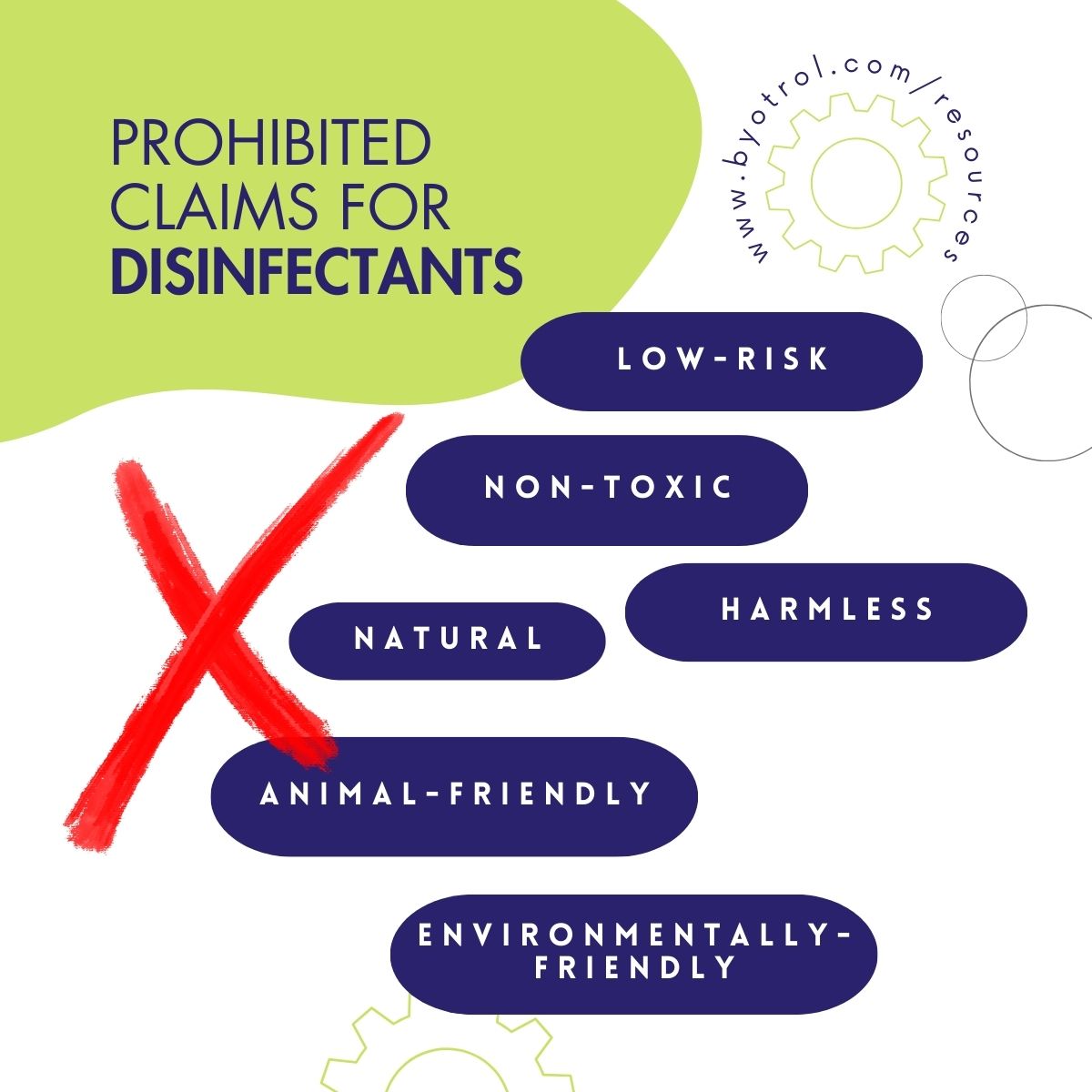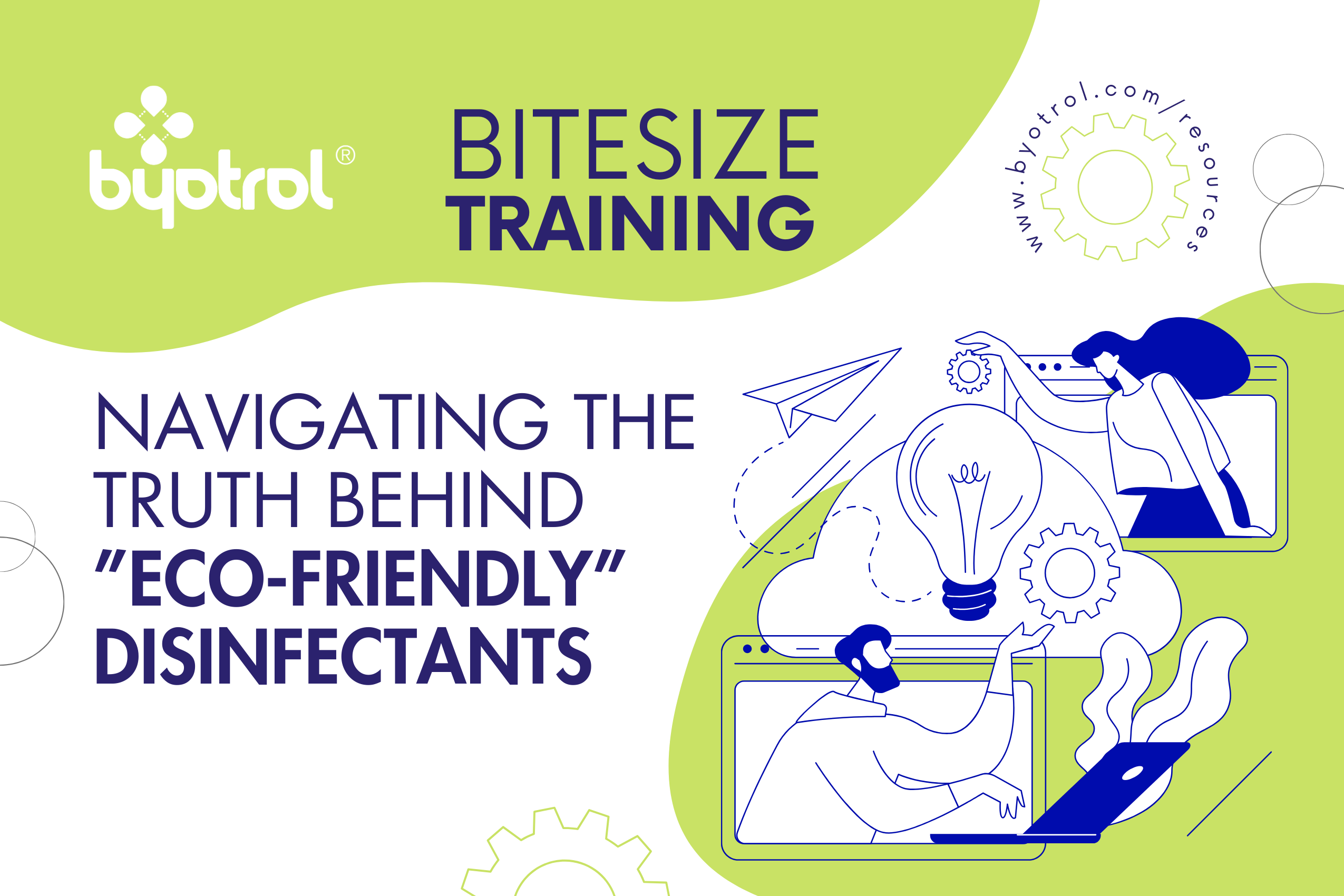In an era where “eco-friendly”, “natural”, and “green” are buzzwords in product marketing, discerning fact from fiction becomes crucial, especially in the realm of disinfectant products. This blog post aims to unravel the intricacies of environmental claims in the disinfectant industry and guide you through the legal framework that governs these claims in the UK and EU.
Understanding Environmental Claims:
When we talk about environmental claims, we’re referring to assertions that a product is either less harmful or more beneficial to the environment compared to alternatives. These claims, often labelled as “eco-friendly” or “natural”, can relate to a product’s ingredients, packaging, or manufacturing process. But it’s not just words; imagery, branding, logos, and colours also play an important role in conveying these messages.


Legal Landscape of Environmental Claims:
Disinfectants play a crucial role in safeguarding both human and animal health by combating viruses, bacteria, and other microorganisms that can cause and spread serious diseases. However, the efficacy of these products often requires the use of potentially hazardous chemicals, which can have severe consequences for environmental, human, and animal health if improperly used.
In the UK and EU, stringent regulations oversee how disinfectant products are marketed, especially regarding their environmental impact. These regulations are in place to prevent misleading information that could downplay the potential risks associated with these products.
Key areas of regulation include:
Human Health Risks: Avoiding understatement of potential health hazards.
Animal Health Risks: Ensuring accurate representation of effects on animals.
Environmental Impact: Clearly stating the environmental consequences.
Efficacy Claims: Reflecting true performance capabilities.
To promote responsible communication and marketing of biocidal products, regulators identified specific phrases which they deemed as misleading, and their use is strictly prohibited.
Such phrases include, but are not limited to:
- Low-risk
- Non-toxic
- Harmless
- Natural
- Environmentally friendly
- Animal friendly
- Any similar terms

What About Substantiated Claims?
Even when backed by evidence, certain claims require extra scrutiny. A product might be praised for its recyclable packaging, but this doesn’t necessarily equate to overall environmental safety. A 2021 global assessment revealed that nearly 40% of “green claims” could be misleading, underscoring the need for stringent regulations. Identified issues included vague language, such as the use of terms like “eco” or “sustainable”, as well as references to “natural products” lacking adequate explanation or supporting evidence. Furthermore, the study identified concerns about the misuse of own brand eco logos and labels not affiliated with accredited organisations. Additionally, some companies were found to manipulate information, such as omitting pollution levels, in an attempt to present their products as more “eco-friendly” than they were (source: UK Government).
To address these challenges, the European Commission took a significant step in March 2023 by proposing a Directive on Green Claims. This directive aims to establish a framework that prevents misleading environmental claims, ensuring that products labelled as “green” provide accurate and transparent information. Despite this, the risks associated with disinfectant products remain high and therefore certain environmental claims will continue to be prohibited.
Why This Matters:
A 2023 study found that products labelled as “eco” or “natural” were often perceived as less hazardous by consumers, regardless of their actual risk level. This misconception underscores the importance of accurate labelling and the need for the regulation of green claims. While disinfectant products can contain sustainable ingredients or might use recycled plastic packaging, manufacturers must present these attributes responsibly, without understating the product’s potential hazards.
It is imperative for users to exercise caution and thoroughly review usage instructions, hazards and warnings both on pack and in the product safety data sheet, before using any disinfectant product. Products that assert to be “safe” or “non-toxic”, either directly or by using environmentally friendly claims, are not compliant with biocidal product regulations and may not accurately reflect the actual hazards and warnings associated with the product.
Conclusion:
As consumers, it is important to look beyond the labels and understand the true impact of the products we use. For disinfectant products, this means recognising that “eco-friendly” claims don’t necessarily equate to safety. By staying informed and scrutinising these claims, and asking suppliers for clarity, we can make better choices for our health and the environment.
